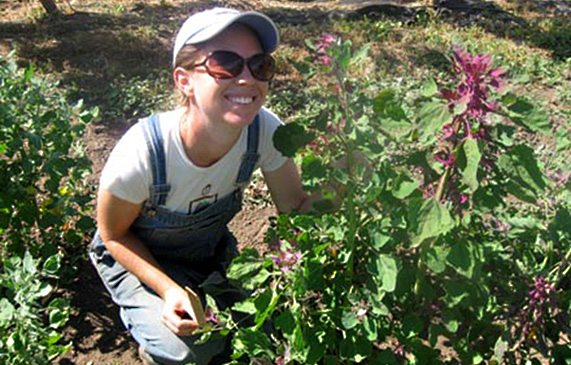Summary
Investigator: Kevin Murphy, Washington State University, Dept. of Crop and Soil Sciences, Pullman, WA
Project locations: Washington, North Dakota
Quinoa, buckwheat, and spelt are ancient grains that have been grown for thousands of years in their native regions. They have served well as highly nutritious staple food sources but have been largely neglected by research universities in the U.S., who typically favor the major cereal and legume crops. Each of these alternative grains is in high demand from consumers and would fill an underrepresented niche in our farming and marketing systems; however, there is currently very little known about locally adapted varieties for buckwheat, quinoa, and spelt. Farmers have requested that research be conducted with these grains in organic systems and to our knowledge, very little, if any, research has been done. This project was initiated from its onset by organic farmers and relies heavily on farmer participatory research for its success.
Intensive variety trials in these crops are being conducted with growers at eight locations across Washington state and North Dakota and multiple agronomic, nutritional and quality traits are being be evaluated for each crop. These ongoing trials (funded by WSU BIOAg program) will help identify the varieties with the traits deemed most necessary by farmers at each diverse location.
In the next step, we will utilize these varieties as parents in crossing schemes that will serve as the genetic basis of a heterogeneous population that is the foundation of the evolutionary participatory breeding (EPB) method. We will develop these populations in the fall and winter of 2010/2011 in WSU greenhouses and they will be planted in farmers' fields in 2011. From this point, we will follow the EPB method using a combination of farmer-based selection and natural selection to develop high quality populations for each crop that are adapted to the different environments across Washington state and North Dakota.
Specific project objectives are to:
- Create populations in fall/winter 2010-2011 based on current field evaluations by organic farmers and researchers of 40 quinoa varieties, 30 buckwheat varieties, and 30 winter spelt breeding lines on seven to nine organic farms;
- Plant, grow, and harvest these early-generation, bulk populations on each organic farm utilizing an evolutionary participatory breeding strategy;
- Develop a coordinated farmer evaluation process for positive and negative field selection of traits of interest in these alternative grain bulk populations;
- Disseminate information to other interested farmers, grain buyers, students, and consumers.
This project combines research with extension and education to address and improve innovation and diversification of farming systems to increase their resiliency and sustainability. Additionally, this project focuses on breeding within the larger context of organic, sustainable farming systems that increase local, diversified food access and nutrition.

